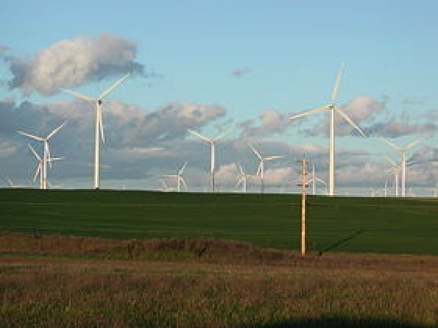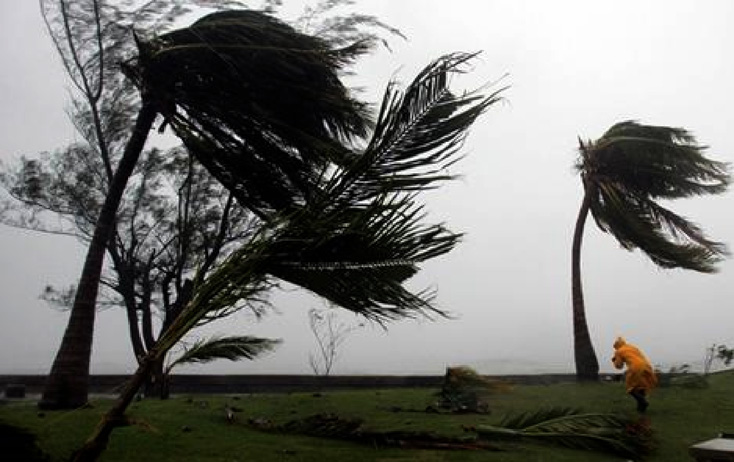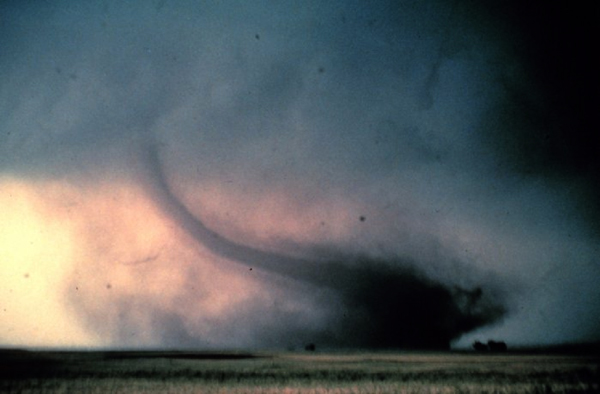anth g6085

wind
michael fitzpatrick (columbia university)

fgf
Bruno Latour writes, “…we Westerners are the odd ones, we who have been living up to now in the strange belief that we had to separate ‘things’ on the one hand and ‘persons’ on the other into two distinct collectives, according to two incommensurable forms of collection” (Latour 2004, 45). Latour notes that so-called savages, non-Westerners, never separated things and people into different categories. Therefore, nature plays a special role in Western conceptions versus non-Western conceptions. In the West, people have been articulated as apart from nature as political entities through and through, while in the non-West, nature does not exist because it is never articulated as opposed to culture. Instead, nature and culture as conceived are actually intimately tied to each other in collectives. This holds true for objects and subjects. We cannot simply relate objects to nature and subjects to culture. All so-called objects and so-called subjects are things which are tied inextricably to each other. Both are necessarily defined through relationships with the other. “…what is true of the ‘object’ is still truer of the ‘subject’. There is no sense in which humans may be said to exist as humans without entering into commerce with what authorizes and enables them to exist…” (Latour 1999, 192). Objects that exist outside of the collective are simply unknown and are unable to be considered. In this way we can see that humans, as sensuous beings, are essential to all relationships with things and can never be bracketed out from non-humans. Likewise, because humans are in the world, non-humans will always necessarily be understood in relation to humans.
This presentation aims to be an extension of my last presentation. In my last presentation I looked at dust in the context of the Dust Bowl. I posited that dust as a thing had qualities of both subject and object, and through its relationships with people, animals, houses, cars, etc, as evidenced in the experience of the Dust Bowl, we could see how a strict subject/object dichotomy was difficult, if not impossible to articulate. Similarly, this presentation will attempt to show the failings of a strict dichotomy between subject and object. I will use the example of weather and in particular wind. It was in fact wind that carried the dust and placed it in the relationship with people and objects. In my last presentation, I related the dust to Tim Ingold’s idea of an ocean of materials as a physical example of the mixing of objects and subjects. Here, wind operates in much the same way, as a material within or a part of a current of materials.
However, instead of strictly relying on the experiences of the Dust Bowl, this presentation will use ideas of semiotics to show that one can see wind as a thing, and therefore trace, through sign systems, a relationship that shows that both nature and culture are tied up in any conception of wind, and indeed by extension, in weather phenomena in general. Moreover, Tim Ingold writes, “The forms of objects are not imposed from above but grow from the mutual involvement of people and materials in an environment” (Ingold 347). Humans being in the world necessarily affect materials being in the world, which simultaneously affects humans being in the world, in a mixture of materials without precise boundaries.
fgffgf

fgf
Similar to our abilities to define that which is being away as contrasted to being there, we can also see how entities have an equipmental quality by seeing, for example, iron’s nature as a hammer or winds nature as the movement of air. Moreover, ‘Nature’ is discovered through the use of entities which are ready-to-hand. “So in the environment certain entities become accessible which are always ready-to-hand, but which, in themselves, do not need to be produced” (Heidegger 100). Movement of air is always there, but we do not see the nature of wind as a thing until we are confronted with the equipmental quality of wind as being measured, for instance, by an anemometer. Wind, and weather phenomena in general, are measurable and when we measure, we necessarily create use-value. Therefore, weather is always part of being in the sense that our relation to it is through its equipmental quality. “As the ‘environment’ is discovered the ‘Nature’ thus discovered is encountered” (Heidegger 100). Nature that elicits feelings is hidden if we ignore the ready-in-hand Being of the entity. Its use value is what helps us discover its nature and enables us to make perceptions and form experiences.
But as Latour correctly writes, the inability of technical action to overcome matter shows how, “…we may understand at last why we do not live in a society gazing out at a natural world or in a natural world that includes society as one of its components” (Latour 1999, 174). Human measurements are only as accurate as human ability allows, meaning measuring is not simply a human imposed action on nature, rather it is an imprecise measure of the material world that includes humans and non-humans. We can look to science and specifically meteorology which have developed technical definitions of wind, for example: The weight of the air above an object exerts a force per unit area upon that object and this force is called pressure. Variations in pressure lead to the development of winds, which in turn influence our daily weather. But what really relates wind to mechanics is the fact that we can measure it. Ingold writes, “It is this seperability of constructive work from the context of sensory experience that gives it the quality of being mechanical” (Ingold 296). The work of measuring prompts humans to bracket out wind as natural and our ability to measure as cultural. Or as Ingold writes, “…knowledge becomes technology by virtue of a practical orientation to the material world that simultaneously converts neutral objects into useful equipment” (Ingold 298).
fff

By being able to measure the wind we can also harness, for instance, energy through wind mills and wind farms. Latour writes, “Once we enter the realm of engineers and craftsmen, no unmediated action is possible” (Latour 1999, 175). Once we begin measuring wind, we necessarily enter into a relationship with it and like Latour’s example of the two slogans, “Guns kill people” versus “Guns don’t kill people; people kill people” shows us, there is not in reality, a strict dichotomy between guns and people, objects and subjects. Wind may be measured by man, but the wind spins the anemometer that allows the measurement to take place.
However, there is a missing link in my argument thus far, because the anemometer, not the wind, is really what is analogous to the gun. It is the anemometer that measures the wind versus people who measure the wind, but the anemometer is a tool that humans use to measure a thing. Latour asks, “What then is a tool? The extension of social skills of nonhumans” (Latour 1999, 211). The anemometer is a link that allows for human relationship to wind and it is through semiotics where we can see that the categorization of the anemometer as an object is irrelevant. The chain of signs is really where the relationship between humans and wind lies.
fff

fff
Equipment is encountered with signs which can provide clues for the characterization of a particular thing. “But signs, in the first instance, are themselves items of equipment whose specific character as equipment consists of showing or indicating” (Heidegger 108). A sign that indicates wind is a specific equipment whose character is indicating direction and speed of air. “Signs always indicate primarily ‘wherein’ one lives, where one’s concern dwells, what sort of involvement there is with something” (Heidegger 111). The sign announces itself by drawing on a totality of equipment with the worldly character of the ready-to-hand. In other words, we can follow a sign because we have developed a Being with equipmental qualities of ready-to-hand entities that signify something.
For Heidegger a sign has three relations to its reference. The first is an indication, meaning that the sign is the concreteness of the equipment-structure and points to an “in-order-to” dynamic. The second refers to the totality of equipment used in what the sign indicates and the third refers to the environment with which the totality of equipment functions (Heidegger 113-114). So, for instance, Heidegger tells us, “Thus, the sun, whose light and warmth are in everyday use, has its own places-sunrise, midday, sunset, midnight” (Heidegger 137). The equipmental quality of the sun is to light and warm and therefore dwellings on earth are planned and oriented with respect to where the sun is, to take advantage of or to shield light and warmth.
Similarly, James Liszka writes on semiotics “…the dynamic object as a determinate grounds the sign, and thus grounding proceeds the fabric for representation” (Liszka 24). The grounding is necessary and is the effect of a dynamic object. Wind as a measurable thing grounds the sign in reality. We can use the example of a directional wind as a sign of rain to show that the sign must come from the ready-to-hand. However, Heidegger notes that, “The south wind may be meteorologically accessible as something which just occurs, but it is never present at-hand proximically in such a way as this, only occasionally taking over the function (for examples) of a warning signal” (Heidegger 1962, 111-112). Only by the farmer taking the south wind as a sign can we arrive at the signs Being. The sign always indicates a worldhood or readiness-at-hand. There might be an interpretant, but the point is that the interpretant and the sign interact and create each other. In other words, “Culture is the product of human beings’ trafficking in signs, mainly symbols” (Daniel 40).
Indeed, social interpretations of weather signs in general have been around for centuries. As a student of Aristotle, Theophrastus writes about weather signs that, “It is therefore necessary to pay attention to where a person is situated. For it is always possible to find such a person to serve as expert witness and the signs from these people are most accurate” (Sider and Brunschon 61). Throughout his work he writes of hundreds of different things which indicate weather phenomena. “A darkish moon signals rain, a reddish moon signals wind” (Sider and Brunschon 75) is a typical example.
Additionally, in their book on “Weather Wisdom”, Stewart and Mildred Kingsbury and Wolfgang Mieder, address among hundreds of listings of different weather signs from sources such as the Bible and almanacs, why such signs are used. They write, “Their intent is to establish a causal relationship between two natural events which will lead to a reasonable statement concerning weather” (Kingsbury, Kingsbury, and Meider 1).
Robert Corrington writes that the semiotics of Charles Sanders Peirce follow that “Nature is a self-recording sign system that leaves traces of its semiotic evolution throughout its innumerable orders” (Corrington 117). As such we should be able to look at this so-called nature and trace the sign systems there to explain things. We need signs and an entity to interpret those signs for any sort of connection with things and objects. “Objects may exist in the universe as individual empiricities or existent facts, but they do not become real until and unless they are represented by a sign, which representation is interpreted as such by an interpretant. This process of signification is as real in nature as it is in culture” (Daniel 19).
Webb Keane writes, that the results of linking signs to the material world “…should be a better understanding of the historicity inherent to signs in their very materiality” (Keane 183), for the material world is embedded with signs which in turn create relational signs and so on to form semiotic chains. “Semiotic ideologies are vulnerable, not least by their exposure to the openness of things” (Keane 194). Things always become associated with other things. A strong gusty wind can be associated with a thunderstorm; a slight southern breeze can be associated with warm temperatures. These associations become the world of materials, the current of materials.
As a history, there is a beginning implied in semiotic chains. The beginning of history, or at least this reconstructed history that humans create derives from something. If we agree that this history is nothing but a collection of semiotic chains then, using Peirce, we can see that the beginning must already be there. In Peirce’s terms it is firstness. “Freedom can only manifest itself in unlimited and uncontrolled variety and multiplicity; and thus the first becomes predominant in the ideas of measureless variety and multiplicity” (Peirce 302). The first occurs when there is nothing behind it. “The first is, predominant in feeling, as distinct from objective perception, will, and thought” (Peirce 302) as it is idiosyncratic and peculiar. Interpretations stem from firstness. “Thus to give a phenomenological description of the “world” will mean to exhibit the Being of those entities which are present-at-hand within the world…” (Heidegger 91). In order to fully describe human history, to describe weather phenomena, to describe the world, one must show an entities firstness, its already-at-hand, its nature as a being. But we can never access the firstness of a thing because it is always already mediated by other things. As I have said, wind has a nature of the movement of air, but that movement of air is in a relationship with other things which create sign systems. These systems then become how humans traverse the ocean of materials, how we make sense of our world, no matter how incomplete this sense is.
“A sign therefore is an object which is in relation to its object on the one hand and to an interpretant on the other in such a way as to bring the interpretant into a relation to the object corresponding to its own relation to the object” (Liszka 19). A sign does not stem from inherent characteristics, from a sort of natural essence, rather from a correlation with a thing that produces an interpretant which are linked together. For instance, the south wind preceded rain by one day and the farmer interpreted the wind as a sign for imminent rain. “The signs ability to represent, then, is established mediately, through the sign’s ability to determine an interpretant which can interpret the signs as correlate with the object” (Liszka 23). In other words, you cannot have a sign without someone to interpret it, and therefore, you cannot have a thing without someone to interpret it. But you also need an interpretant to have a thing and an interpretant to have a sign. All are dependant.
vvv

vvv
“A sign stands for something to the idea which it produces, or modifies. That for which it stands is called its object; that which it conveys, its meaning, and the idea to which it gives rise, its interpretant” (Peirce 339). Likewise, weather signs are phenomenological interpretations, so it is more important to try to trace how weather signs function in terms of what is already there, rather than try to prove the truth of an individual sign. Latour writes, “…we consider chains of associations and we say that they alone exist” (Latour 2000, 11). Once we see semiotic chains in things, and they are always in things, they cease to be mere objects. Wind literally gathers when it brings dust particles together in a cloud that penetrates homes and bodies as it did in the central plains of 1930’s America. But wind also gathers relationships with humans and non-humans. Wind, in a similar vein to Latour’s speed bump, is ultimately filled with many things, such as meteorologists, tornado victims, swaying branches, clouds, and of course dust. Therefore, we can also begin to see what was thought of as a natural occurrence and outside of culture, as a thing that we must treat as both natural and cultural.
Latour also writes, “Not so many years ago, contemplating the sky meant thinking of matter, or of nature. These days we look up at a sociopolitical imbroglio, since the depletion of the ozone layer brings together a scientific controversy, a political dispute between North and South, and immense strategic changes in industry. Political representation of nonhumans seems not only plausible now but necessary when the notion would have seemed ludicrous or indecent not long ago” (Latour 1999, 202). The wind and indeed, all weather phenomena similarly show that culture is not merely the realm of humans and nature the realm of non-humans. Rather, both are inextricably linked. As Latour reminds us, this very understanding has significant consequences to humans in a world of ecological disasters that are not simply natural or human caused, but instead come about from the interaction of humans and nature.
references
Corrington, Robert. An Introduction to C.S. Peirce. Lanham, Maryland: Rowman & Littlefield Publishers Inc., 1993.
Daniel, E. Valentine. Fluid Signs: Being a Person the Tamil Way. Berkeley: University of California Press, 1987.
Heidegger, Martin. Being and Time. New York: Harper One, 1962.
Ingold, Tim. The Perception of the Environment: Essays in Livelihood Dwelling and Skill. London: Routledge, 2000.
Keane, Webb. “Signs are not the Grab of Meaning: On the Social Analysis of Material Things”. In Materiality, edited by Daniel Miller, 182-205. Durham: Duke University Press, 2005.
Kingsbury, Stewart, Mildred Kingsbury and Wolfgang Mieder. Weather Wisdom: Proverbs, Superstitions and Signs. New York: Peter Lang Publishing, 1996.
Latour, Bruno. Politics of Nature. Cambridge: Harvard University Press, 2004.
________. “The Berlin Key or How to Do Words with Things”. In Matter, Materiality and Modern Culture, edited by Paul Graves-Brown, 10-21. New York: Routledge, 2000.
________. Pandora’s Hope: Essays on the Reality of Science Studies. Cambridge: Harvard University Press, 1999.
Liszka, James. A General Introduction to the Semeiotic of C.S. Peirce. Bloomington: Indiana University Press, 1996.
Peirce, Charles Sanders. Collected Papers. Cambridge: Belknap Press of Harvard University, 1960
Sider, D and C.W. Brunschon. Theophrastus of Eresus: On Weather Signs. Leiden: Brill, 2007.
gg